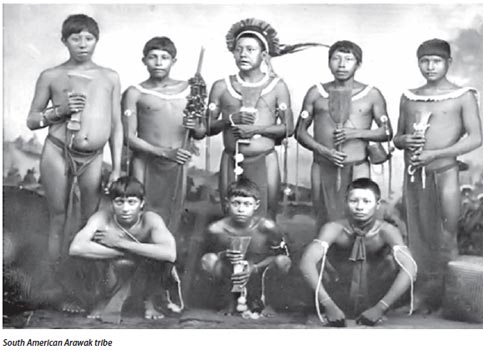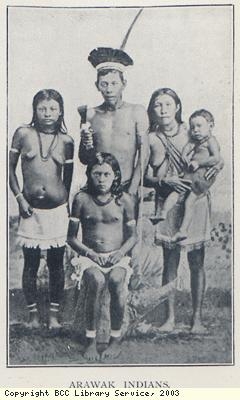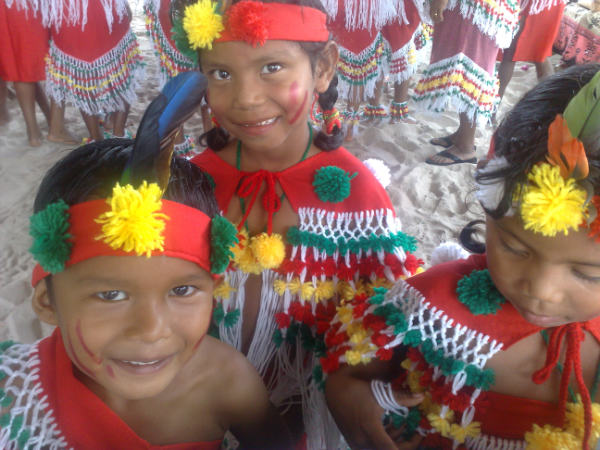Arawak peoples
The Arawak Arawak Arawak or (from the Lokono aru " Cassava Blossom" ) are an indigenous people on the north coast of South America.
The Arawak are eponymous for the ethnic group of the Arawak, which has spread over nearly all of South America, and the place they have in common in the arawakischen language group and in their cultural similarities.
Designation
The term was first used by the Spanish colonists as the name of the Taíno in the Greater Antilles and the Bahamas ( Lucayan ), the Nepoya and Suppoyo Trinidad and Igneri on the Lesser Antilles as well as language related groups (including the Lokono ) along the northeast coast of South America ( also of Brazil ). All these people spoke an Arawakan language.
Language
Their language is Arawakisch (ISO 639: ARW ), which is still spoken by 700 people in Suriname and Guyana in 1500.
Settlement area
Nowadays there Arawak ethnic groups only on the American mainland. Speak about 130,000 Garifuna, which arose from the mingling of Inselkariben, the subject of this once Igneri - Arawak and African-American slaves who fled, an evolved form of Igneri language on the Atlantic coast of Honduras, Guatemala and Belize.
History
Life before 1500
The Arawaks lived in village communes and built under other cereals, sweet potatoes and manioc. They could, for example, spin and weave, but held no livestock and had no iron.
Colonization and partial extermination
The Arawak were exterminated by enslavement, persecution, robbery and possession of agricultural land transition to Spanish landowners and imported diseases after a hundred years of Spanish conquest.
While the Caribs were characterized by the Spaniards as a warlike, the Arawak were considered generally peaceful. Columbus described them as naive and noted in the logbook "They offer everyone to share [ their goods ] ." First encounters with the sailors in the service of Spain, Christopher Columbus in 1492 passed off peacefully, the Arawaks offered to sailors, according to the logbook of Columbus, among others, cotton, and the sailors exchanged among others glass beads. Columbus looked but always as future subjects or even as slaves.
Shortly thereafter, the Spanish Arawaks arrested and interviewed after these gold deposits. Spanish settlers enslaved the Arawaks, abused them and forced them to work. Gold could not find them, so that Columbus instead of gold ( which he had promised the ruling house of Spain ) brought slaves to Spain. The Arawaks tried to fight back, their weapons were inferior to those of the Spaniards clearly. It came under the Arawaks because of the hopeless situation into a mass suicide.
1515 the number had reduced to Haiti from around 250,000 to an estimated 50,000 in 1550 there were approximately 500 people. A report of 1650 did not identify any remaining Arawaks.










